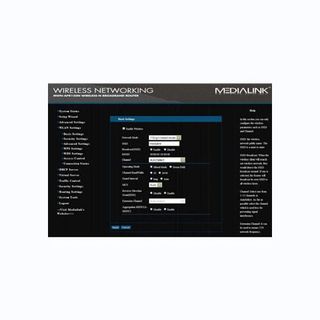

Here is what we know so far as this story is still developing. I plan on calling MediaLink tomorrow to ask them about the processor, hardware specs, the bootloader and maybe even to try and snag some source code.How does KRACK affect me and my Medialink Router? bin described in the article runs (in the technical sense of the term) in QEMU without much finagling. The WiFi is powered by a Ralink RT2860 module, it appears to be pretty generic. It is also a clone of the Tenda W268R device manufactured by "SHENZHEN TENDA TECHNOLOGY CO.,LTD", according to the FCC documents. The MWN-WAPR150N is definitely running on Linux, Linux kernel strings and references to initrd are scattered all around the firmware.
#Medialink wapr150n how to#
I have no idea what filetype the extracted image is and I have no idea about how to find that information out. Running it on the extracted image file didn't work as well as I had expected, getting a "File is not MacBinary" error.
#Medialink wapr150n windows#
I don't own a Mac, but I found an app for Windows named DeMacBin which is capable of extracting MacBinary filesystems to plain ole' files.

MacBinary is a file format used by Macs to create disk images.

You can't exactly have a Lotus Notes worksheet or a music file as your firmware. Out of those five file formats, only one really makes sense. Collecting data from file: Image~ġ6.1% (.WK*) Lotus 123 Worksheet (generic) (2005/4)ĩ.0% (.GMC) Game Music Creator Music (1130/43)Ĩ.0% (.TGA) Targa bitmap (Original TGA Format - No Image ID) (1007/3) TrID/32 - File Identifier v2.10 - (C) 2003-11 By M.PontelloĪnalyzing.
#Medialink wapr150n archive#
This new development wasn't such a bust in the end - opening the extracted contents of the LZMA archive in my hex editor of choice showed a good amount of router-related code. bin was but a compressed LZMA:25 archive of a 3,484 kilobyte file. My excitement quickly waned once I saw that the image extracted from the. I was excited, for a moment - progress was finally being made. Once again the file was binary mish-mash with no human-readable strings, but this time 7-zip was able to open the file without errors. Using that shell script, I extracted an image file. I found this wiki page, which contains a shell script capable of extracting data from uImage files. bin was a filesystem image - uImage, to be precise. Luckily for me, the user "trip" on #chat on EFnet told me how to get into that sweet sweet firmware goodness. I couldn't figure out the file format anywhere online and a hex editor showed it was all binary mishmash with no human-readable strings. bin file which contains the actual firmware stumped me, at first. I installed it on my router, and according to the web front-end, the firmware's version string is: (deep breath, get ready for it) "MWN-WAPR150N_FirmwareUpdate_v11.8". I set out by downloading the latest (as of July 8, 2012) firmware. This is a log of my adventures with the MediaLink APR150N wireless router. I especially wanted to mess with the web front-end, which is coded in ASP and runs on GoAhead-Webs, a web server for embedded systems. It's a fine Wireless-N router as it is, but the inner programmer in me wanted to get inside and see what damage I could do. I would put DD-WRT on it, but the hardware is too limited for that sort of junk. Today, I set out on a quest to try and decrypt/decompress/dearchive the firmware of my MediaLink MWN-WAPR150N router.


 0 kommentar(er)
0 kommentar(er)
